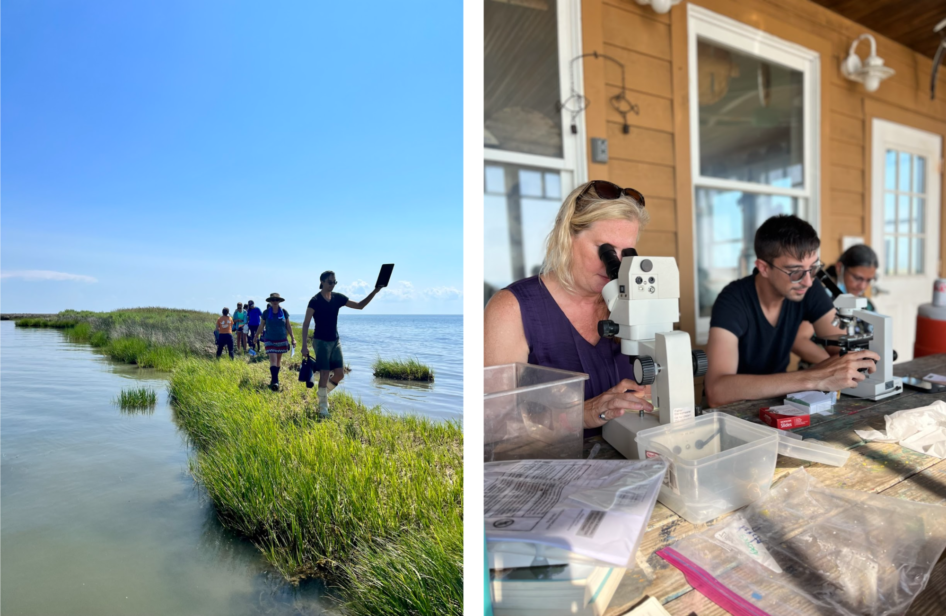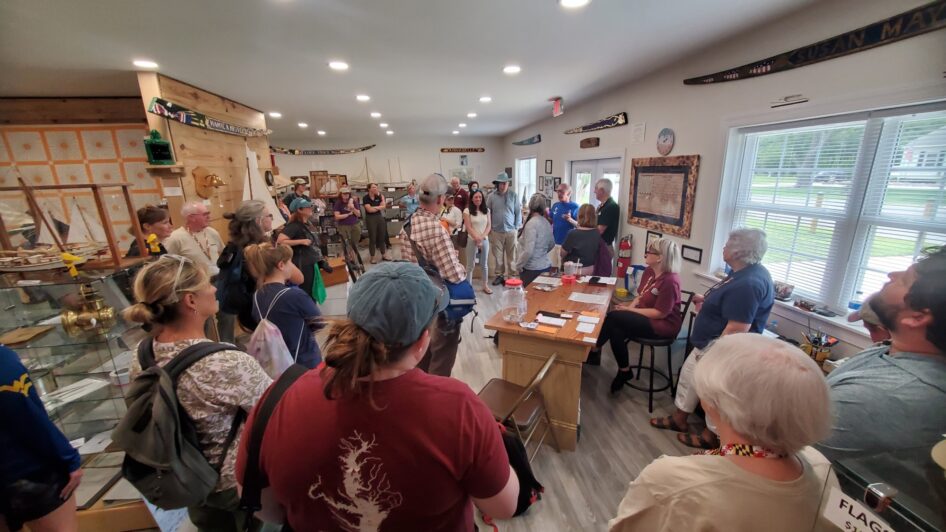Social Emotional Learning: Supporting students, teachers and science investigations

by Krysta Hougen-Ryall (krysta.hougen@noaa.gov), environmental communication specialist at the NOAA Chesapeake Bay Office
In the spring of 2022, the planning team for Teachers on the Estuary (TOTE) knew they needed to make changes to their successful week-long professional development training. In a post-COVID world, students were struggling and teachers often talked about being “burnt out”. For well over a decade, the Chesapeake Bay Foundation has hosted TOTE at the Karen Noonan Environmental Education Center with planning partners from the Chesapeake Bay National Estuarine Research Reserve in Maryland and the NOAA Chesapeake Bay Office.
Each year, classroom teachers spend five days at the Center participating in a Meaningful Watershed Educational Experience (MWEE) using the Chesapeake Bay, tidal marshes, and local communities to answer driving questions like: How are environmental and social changes impacting coastal communities and how can communities support resilience to these changes?
Investigations into local environmental issues will always remain at the center of TOTE but in 2022 the planning team started integrating social emotional learning (SEL) skill practice in response to the struggles happening in schools to model how teachers could bring SEL activities back to their classrooms.
“SEL is the process through which all young people and adults acquire and apply the knowledge, skills, and attitudes to develop healthy identities, manage emotions and achieve personal and collective goals, feel and show empathy for others, establish and maintain supportive relationships, and make responsible and caring decisions.”
- Collaborative for Academic, Social, and Emotional Learning (CASEL.org)
SEL includes five core competencies: Self-Awareness, Social Awareness, Self-Management, Relationship Skills, and Responsible Decision-Making. SEL can improve academic achievement for students, support mental health, promote safe schools and help students prepare for their post-academic lives. It also has benefits for adults! Teachers can build stronger relationships with students, better manage their classrooms, feel more effective at their jobs and experience higher job satisfaction and less burnout.
“SEL activities helped me to realize how important self reflection is for me as a teacher and for my students; I learned a lot of new and insightful and fun SEL activities to implement in my classroom.”
- Teachers on the Estuary (TOTE) participant

In the summer of 2024, the TOTE team will continue to refine the integration of SEL into the MWEE framework and training. If you are interested in incorporating SEL into your own science instruction, you can check out this folder where you will find activities and booklets the planning team has found helpful. Below are a few examples of how SEL supports learning and participation during a MWEE.
Self-Awareness:
Label your current emotions to prepare yourself to learn and be curious.
Example Activity: Ask participants to use mood meters to identify their mood and reflect on what is causing certain feelings.
Social Awareness:
Learn about the perspectives and behaviors of others especially related to the investigated environmental issue. Recognize community resources and needs when investigating the issue and planning the action.
Example Activity: Participants practice active listening with each other to prepare them for interviews with community members and experts.
Self-Management:
Manage one’s emotions and behaviors when learning in new situations and with new people to achieve the collective goal of investigating the environmental issue and taking action.
Example Activity: Help students feel comfortable learning in a new outdoor environment by starting with “I Notice, I Wonder, It Reminds me of”. The activity gives students a chance to slowly and individually engage with the new space and get them ready to learn more.
Relationship Skills:
Work well as a team with fellow students and community partners. Work with and listen to community members when understanding the environmental issue, identifying the root cause of the issue, and taking action. Recognize the relationship the community has with the environment.
Example Activity: Ask participants to review common environmental issues and components in the region and discuss how they are related to each other and to people.
Responsible Decision-Making:
Use gathered scientific and social data to identify possible solutions to the investigated environmental issues. Weigh the benefits and consequences of each solution to choose an informed action.
Example Activity: Ask participants to review data and reflect on how the data is impacting different levels of their community and the type of action they can meaningfully take at each of those levels.
